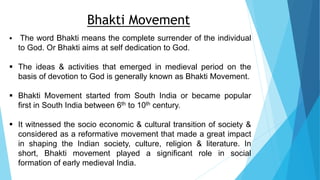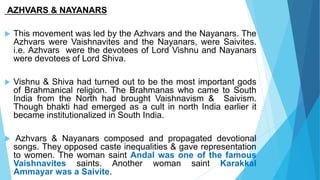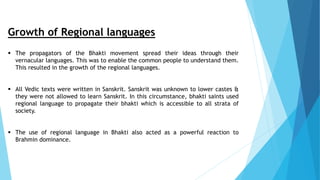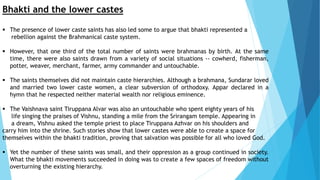The Bhakti movement began in South India between the 6th-10th centuries and was led by poet saints known as the Alvars and Nayanars. It aimed to make devotion to God accessible to all people, regardless of caste, by using local languages and emphasizing equality before God. While it did challenge some social hierarchies, it is debated whether the movement was truly reformist or helped uphold the emerging feudal order. By emphasizing personal devotion and surrender to God, the movement's ideology could be seen as parallel to the lord-servant relationship common in feudal societies. Overall, the Bhakti movement played a significant role in spreading religious ideas and influencing the social and cultural development of medieval South India













